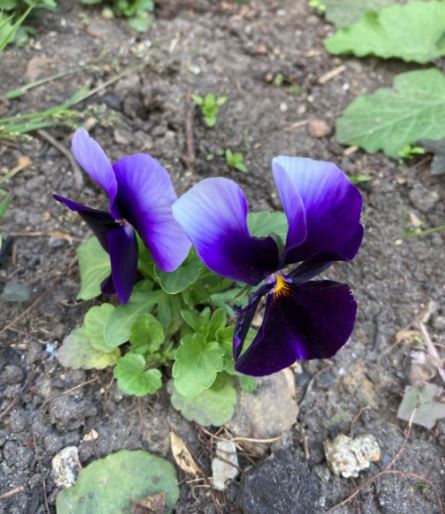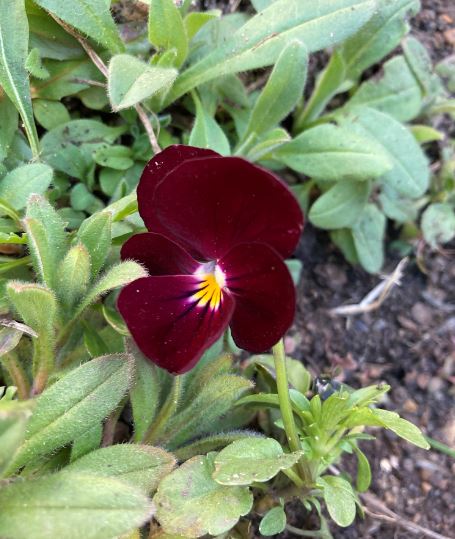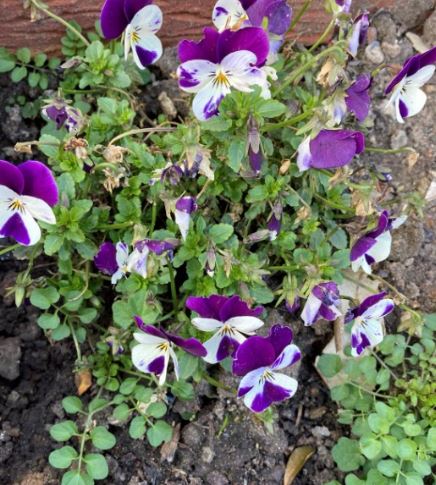
Short version: A little edible flower that fits well in little spaces. Some species are perennial and do OK in shade, some are perennial with mild winters. The biggest ones, also called pansies tend to be annual and also require more sun. They vary in taste. If you’re looking for that ‘parma violet’ flavour then you’re really looking for the very specific – viola odorata.
I am often berated by my small child for not growing more flowers. Due to the small size of our garden, I find it really difficult to sacrifice space to something attractive over edible. We compromise with edible flowers. Here is the page with more details on ‘edible flowers’. It truly is a compromise because the flowers that we do grow are often small. The bigger, showier flowers often don’t taste very nice (if they’re edible at all). There are exceptions like nasturtiums which I think are both beautiful and tasty – though little one will only eat them cooked because they are so peppery.
I find the nomenclature around violets are little confusing. If anyone knows better, please do feel free to correct me. I’d appreciate the education. So as far as I understand it – when people talk about violet flavour, they mean sweet violets (viola odorata). These have small purple flowers that were often crystallised and taste a bit like the Parma violets. The leaves are heart shaped. Pansies are the larger showier flowers – hybrids called viola tricolor var hortensis or viola x wittrockiana. Viola tricolor is the original wild violet, also called ‘heartsease’ or ‘Johnny jump ups’, from which other things have been hybridised. All the tricolor and tricolor hybrids have scalloped edges on their leaves (that I have seen anyway).
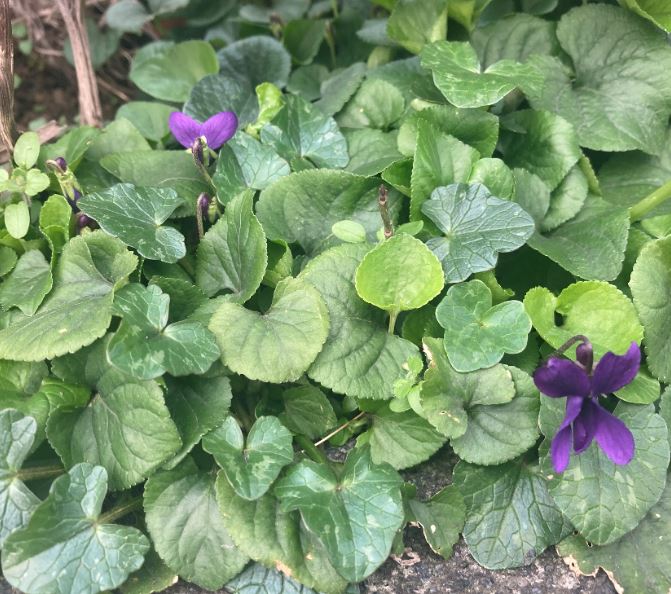
sweet violets / odorata 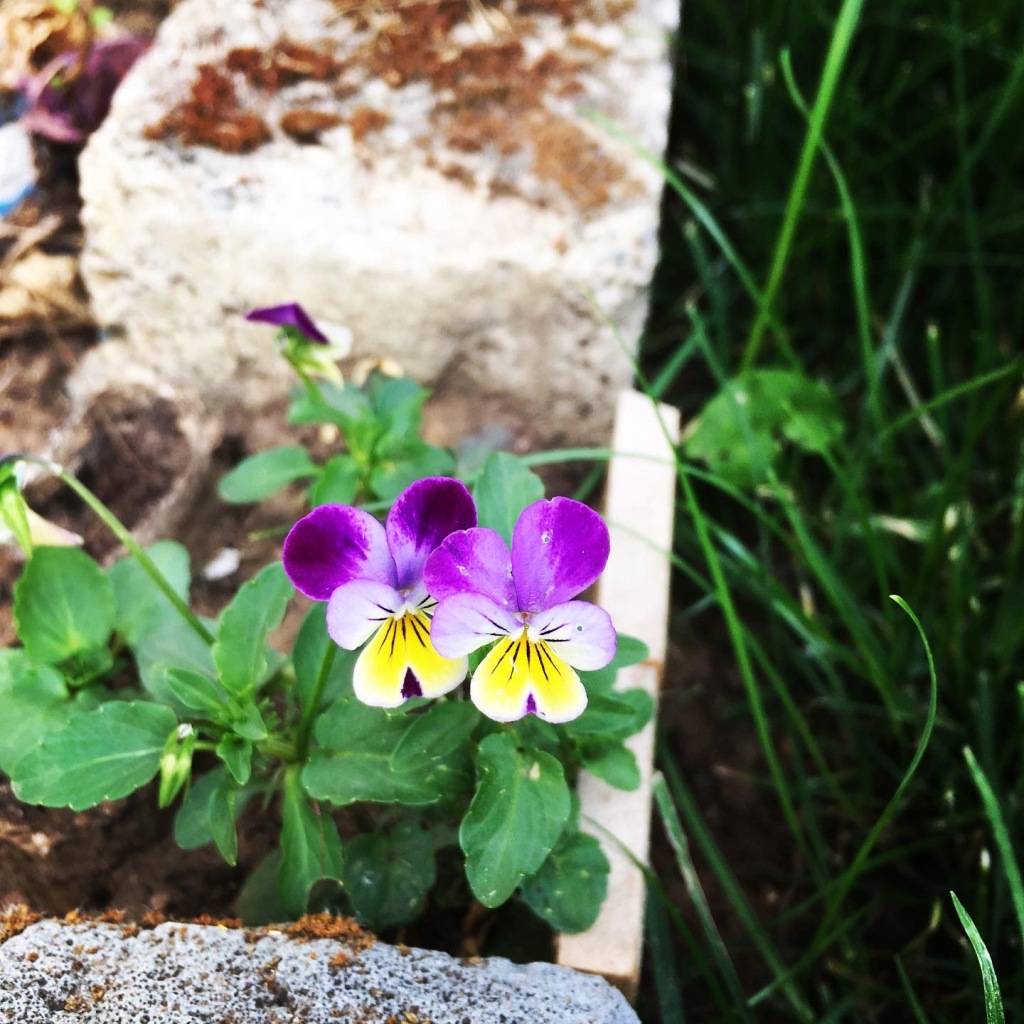
heartsease 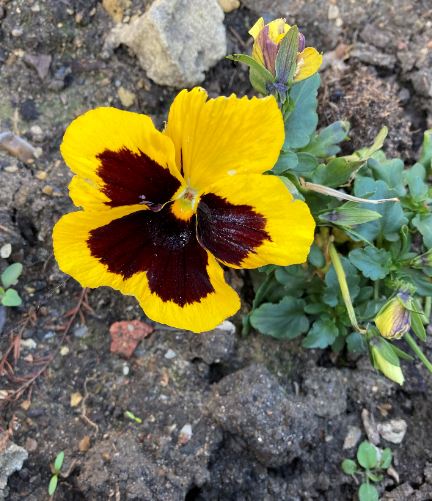
pansy 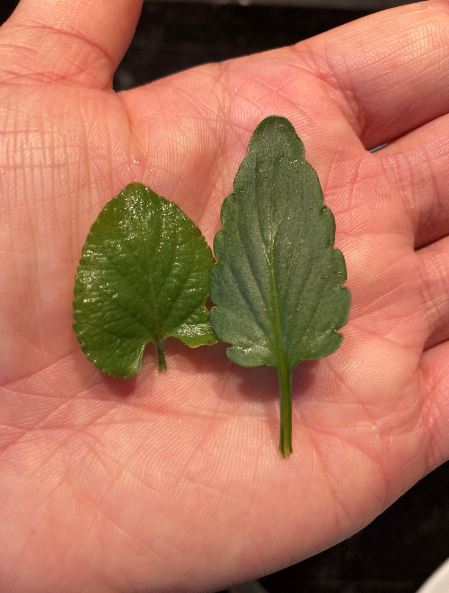
odorata leaf on the left, pansy and other violet leaves often have the shape on the right
I have often seen the names pansy and violet used interchangeably. All of them have the distinctive overlapping two upper petals, two side petals and a bottom petal. The traditional pansy with a larger flower and blotches on the petals as opposed to lines tend to be grown more as annuals. Many of the pansy varieties have been bred to grow and bloom over winter.
How to grow
You can often find these in garden centres as little plants. The most popular ones are pansies due to their larger size and variety of colours. I found lots of different varieties grow fine from seed. It takes more effort, but it is much cheaper. The seeds are tiny, so it is tempting to sow lots together. Though there’s nothing wrong with planting a few and then thinning later, I prefer to and plant a single seed in a little pot, like half a toilet roll so that they can go straight into a hole, pot and all, when ready to go outside.
Violets are generally half hardy perennials. This means that they will do fine over winter as long as conditions are not too harsh. In the south of England, where we are, they tend to do fine even now in the snow and in the frost that have happened so far. They probably won’t survive the conditions further up north. This is why they are often grown as annuals.
They grow best in some sun, but I found they can do fine in quite a bit of shade. Because the sweet violets (viola odorata) are often found in woodlands, I plonked them in rather deep shade behind the apple tree. They survive fine there but they don’t flower particularly well. The tricolour and smaller violets do fine in shady spots. I suspect they don’t produce as many flowers the deeper into the shade they are though. They do best in spring sun and summer shade.

shady spot for heartsease 
short plants in corners 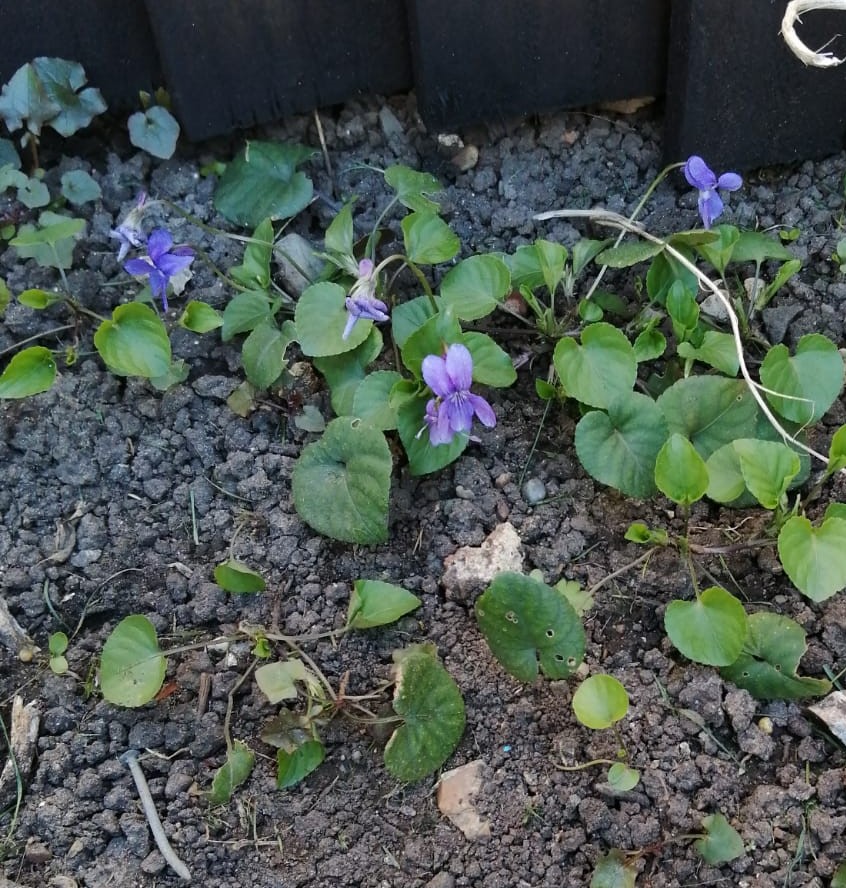
odorata in shade
They generally tend to be very short plants, so do very well squeezed into little gaps in and around vegetables where they don’t compete for light. We do have a lovely trailing variety which did better in a hanging pot (made from repurposed 2 litre bottle) in the shade than in the sun. They seem to do well in pretty much all soil types and soil acidity.
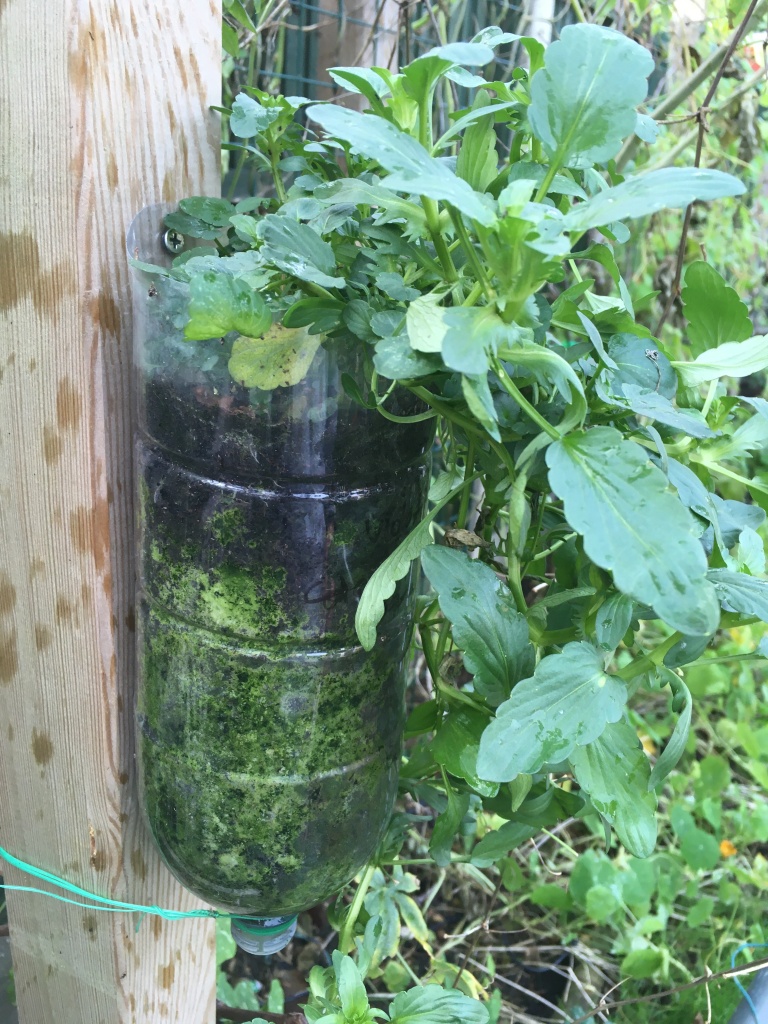
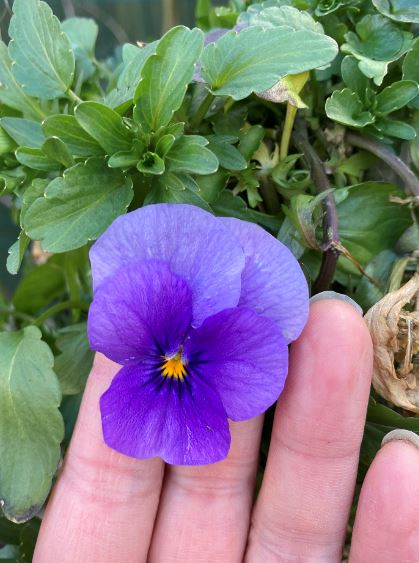
the violet in the ‘hanging basket’
They can grow almost throughout the year, depending on when you’ve sown them, their position and amount of light they get. Pansies require more sun to grow and don’t fare well in shade. They are also much less hardy and only behave as annuals where the winters are short and mild and the summers are not too hot.
I am trying to replace the lawn with edible flowers and the low growing violets are perfect for this.
How to harvest
If you grow them close together you can get a beautiful show of colour and picking a few out for a salad doesn’t make much of a dent. However, we tend to grow them all over the place, tucked in where we feel like it. Little one finds it more satisfying when she has to hunt for flowers. We have flowers from March till about December/January, depending on how cold it gets. In the warmer months like May and June we get quite a lot dotted all over the place. Around November, December and January we only really have on average about one a week from our various plants. You can harvest the flowers whenever you see them, and you can harvest the young leaves but if you pick too many it will affect the flower production.
In early March, the sweet violets are the first to appear. The other violets are in bud. However, when they flower depends on the variety and when you sow/plant them.
How they taste
When you say violets people generally think of Parma violets. Only the sweet violets will smell and taste like these. The leaves are also pleasant and slightly mucilaginous (a bit like musk mallow leaves). I’ve read that dog violets, which look almost identical to sweet violets, taste bland and slightly bitter. I haven’t had the chance to try these yet.
Most of the other violet flowers tend to taste a bit like lettuce with varying degrees of wintergreen, depending on the variety. For anyone who doesn’t know what that taste is – imagine deep heat. Yes, the spray for muscles. The leaves have a similar flavour. It’s up to you to decide it that is an acquired taste or not. At least you can use them as a garnish without having to worry about poisoning anyone.
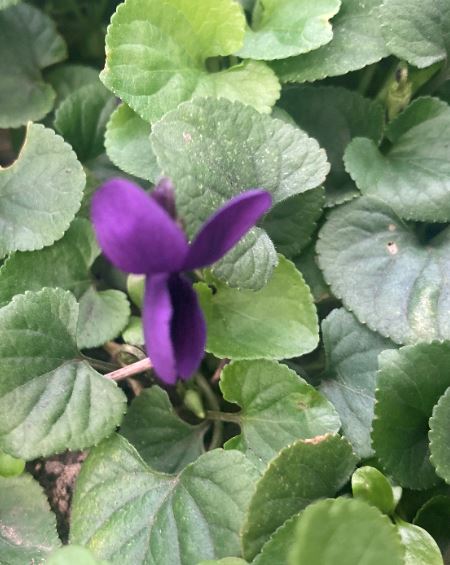
parma violet taste 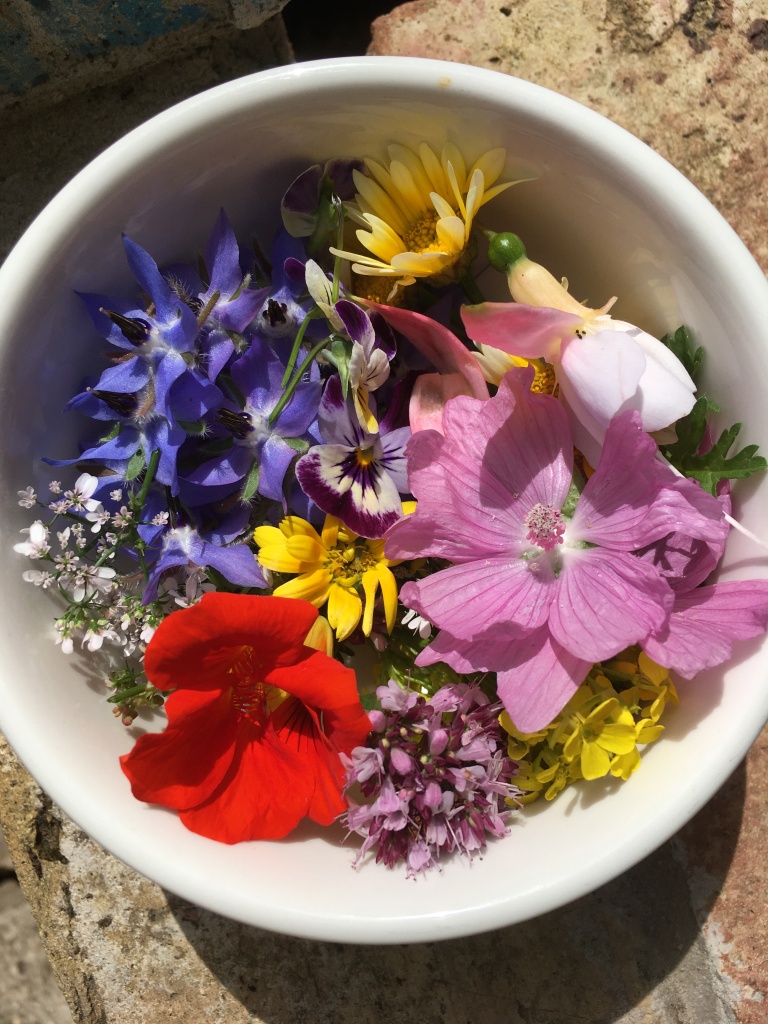
violets sparsely in salads 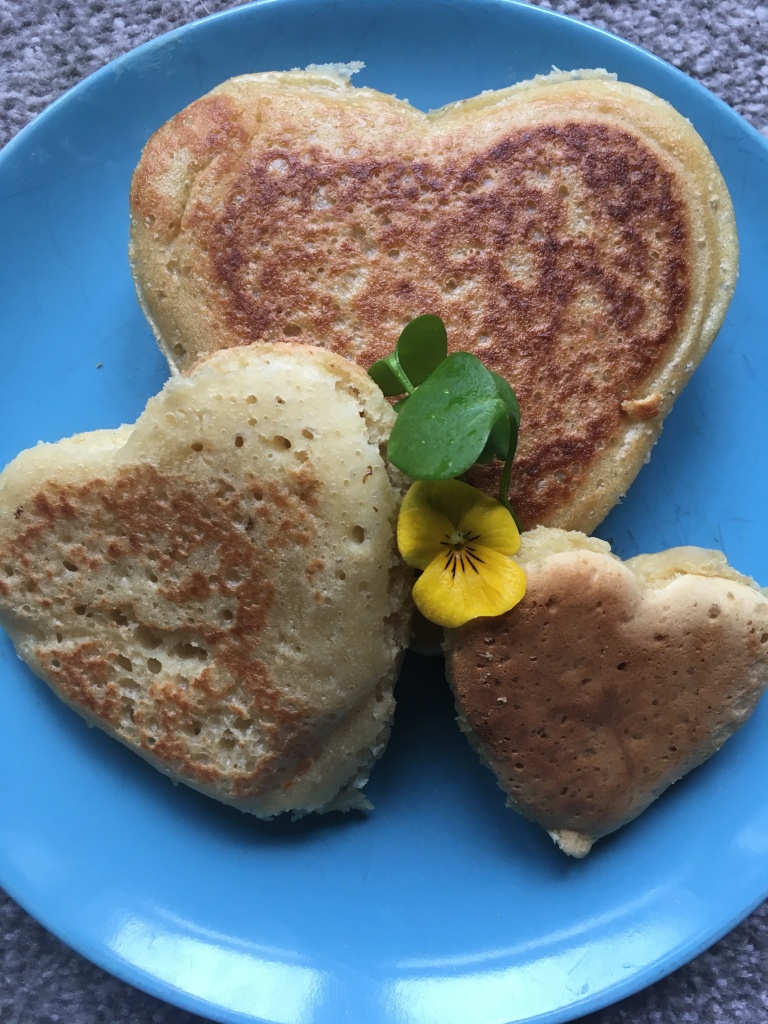
violets as garnish
The bigger showier pansies taste more lettuce like. I’ve had a couple that had no wintergreen flavour at all.
Warning
Just a word of caution. African violets are a completely different family and are NOT edible. All of the viola family are edible but I’m not saying all taste great. Also I would not recommend eating flowers that you haven’t grown yourself as you don’t know if they’ve been sprayed (with chemicals… or er… by animals). Also it is possible that you may have an allergy to something you haven’t tried before. I get a funny tingle when I eat sweet violets, but not the other violets. I wasn’t sure if it was an allergic reaction or something in it makes my tongue tingle (like the way artichokes make things taste sweet) until I came across this website that talked about violet stems causing a problem. This is the only time I’ve seen this (though I have read that the seeds and roots are not for consumption). Proceed with caution and if something feels funny then it may be wise to give it a miss.
